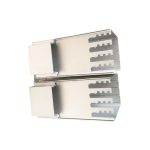
Bitcoin mining from home can be a rewarding venture, but only if approached strategically. Many enthusiasts dive into home mining without fully understanding the challenges, which can lead to inefficiencies and financial losses. In this guide, we address the top 10 mistakes to avoid when starting home Bitcoin mining, helping you optimize your efforts for success.
1. Underestimating Initial Investment Costs
Bitcoin mining requires more than just buying a mining rig. Additional expenses include:
- Hardware: ASIC miners can cost thousands of dollars, and older models may not be efficient.
- Cooling Systems: High-performing miners generate immense heat, necessitating adequate cooling systems.
- Power Supplies: Quality PSUs are critical for stable operation.
- Electricity Upgrades: Homes may require electrical rewiring to handle mining equipment.
Failing to account for these costs can lead to unexpected financial strain.
2. Ignoring Electricity Costs
Electricity is the most significant operational expense in Bitcoin mining. Key considerations include:
- Local Electricity Rates: Determine your cost per kilowatt-hour (kWh). High rates can make mining unprofitable.
- Efficiency of Equipment: Modern miners like the Antminer S19 are more efficient than older models.
- Power Consumption Planning: Calculate total electricity use, including cooling and additional components.
Neglecting these factors can result in unsustainable costs.
3. Choosing Inefficient Mining Equipment
Opting for outdated or inefficient mining rigs is a common mistake. Evaluate hardware based on:
- Hash Rate: Measures the computing power of the miner.
- Energy Efficiency: Lower watts per terahash (W/TH) indicates better efficiency.
- Longevity: Invest in reliable equipment with a track record of durability.
Conduct thorough research before purchasing hardware.
4. Skipping Pool Mining
Solo mining may sound appealing, but for home miners, it’s impractical due to Bitcoin’s high difficulty. Pool mining offers:
- Steady Rewards: Pools combine resources, offering more consistent payouts.
- Lower Risk: Spreading the computational work reduces the chances of prolonged periods without rewards.
- Community Support: Many pools provide resources and guidance for newcomers.
Always research pool fees and reputation before joining.
5. Neglecting Proper Ventilation
Mining rigs produce significant heat. Without adequate ventilation:
- Overheating Risks: Can lead to equipment failures and reduced lifespan.
- Increased Cooling Costs: Inefficient cooling raises energy consumption.
- Safety Concerns: Excessive heat can pose fire hazards.
Ensure a dedicated, well-ventilated space for mining.
6. Overlooking Software Optimization
Even with top-tier hardware, poor software choices can undermine your efforts. Consider:
- Mining Software: Use trusted, up-to-date software optimized for your hardware.
- Firmware Updates: Regular updates improve performance and security.
- Monitoring Tools: Use tools to track hash rate, power usage, and temperature.
Optimized software ensures maximum efficiency.
7. Failing to Account for Network Difficulty
Bitcoin’s network difficulty adjusts approximately every two weeks, directly impacting profitability. Avoid this mistake by:
- Using Profitability Calculators: Tools like Whattomine provide insights into potential earnings.
- Staying Informed: Monitor difficulty changes and adapt your strategies accordingly.
- Adjusting Expectations: Understand that mining profits fluctuate over time.
Ignoring difficulty trends can lead to unrealistic profit projections.
8. Mismanaging Security Risks
Home miners often overlook the importance of security, exposing themselves to:
- Physical Theft: Secure mining rigs with locks or alarms.
- Cyber Threats: Use firewalls and avoid public Wi-Fi for mining-related activities.
- Wallet Security: Store mined Bitcoin in a secure wallet, such as a hardware wallet.
Prioritize security to protect your investment.
9. Neglecting Noise Control
Mining equipment can be extremely noisy, causing discomfort at home. Mitigate noise by:
- Using Noise Dampening Materials: Install foam or insulation around the mining area.
- Dedicated Space: Set up mining operations in a garage, basement, or isolated room.
- Quieter Equipment: Some newer mining models are designed for reduced noise.
Ignoring noise control can lead to complaints and disruptions.
10. Failing to Monitor ROI
Regularly assessing your return on investment (ROI) is critical. Track:
- Operational Costs: Include electricity, cooling, and maintenance.
- Bitcoin Prices: Mining profitability often correlates with market prices.
- Equipment Efficiency: Replace underperforming rigs when necessary.
Constant monitoring helps maintain profitability and inform decision-making.






